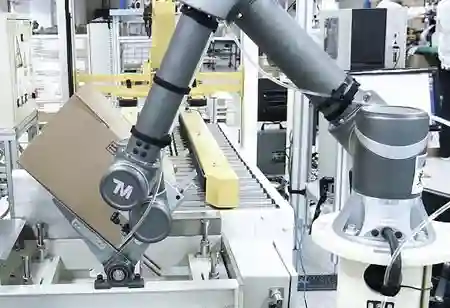THANK YOU FOR SUBSCRIBING
Be first to read the latest tech news, Industry Leader's Insights, and CIO interviews of medium and large enterprises exclusively from Food and Beverage Tech Review
What are the Potential Benefits of Robots for the Poultry Industry?
Robotics has enhanced production efficiency by lowering labor expenses per bird, in particular. For this reason, the poultry business is well-suited to continue to reap the benefits of robotics integration

By
Food and Beverages Tech Review | Tuesday, October 26, 2021
Stay ahead of the industry with exclusive feature stories on the top companies, expert insights and the latest news delivered straight to your inbox. Subscribe today.
Robotics has enhanced production efficiency by lowering labor expenses per bird, in particular. For this reason, the poultry business is well-suited to continue to reap the benefits of robotics integration.
FREMONT, CA: Historically, many operations in the poultry industry were labor demanding and required repetitive actions by stock people, such as monitoring birds for health and welfare, feeding birds, collecting eggs, and removing excrement. Specific duties also required considerable lifting. While mechanization facilitated the performance of some of these activities, others have been automated, eliminating the need for close human supervision. For example, the modern egg industry has automated most of the feeding process, eliminating excrement, and collecting, counting, grading, and packing eggs. In broiler production, hatchlings can be moved automatically from the incubator to the broiler shed floor, and bird growth can be monitored using automated weighing platforms. The weighing platform's data has aided in the more precise management of the birds' nutrition and environmental requirements. Additionally, robotics is used to regulate the shed environment. Fully automated systems are managed by a computer that constantly checks temperature, humidity, and gas levels, among other parameters. The computer controls ventilation to maintain the appropriate level of comfort in the area.
Robotics Development In The Poultry Industry
Robots can be semi-automatic or fully automated. A semi-automatic system is exemplified by the gathering of eggs via a conveyor belt system. While the technology may automatically count the number of eggs passing a certain point, the robot does not make operational decisions.
This six-tier cage configuration with an egg lift device is an example of a semi-automatic robot. For instance, egg back-up is not noticed. If an issue arises during the egg collecting or transfer process, the human operator must assume control. An everyday analogy would be the cruise control feature on a car. Once cruise control is enabled, the vehicle will not slow or come to a complete stop unless the driver deactivates it or taps the brake pedal.
Fully automatic capability entails decision-making autonomy. Returning to the cruise control scenario, consider that the vehicle is equipped with advanced cruise control. Front-end sensors detect the presence of cars ahead and automatically change the vehicle's speed when approaching a slower-moving or stationary vehicle. At least one automated egg collection system incorporates sensors beneath the egg collection belt to track the weight of eggs in particular regions. These are frequently located in strategic locations, such as in front of nest boxes. The data is sent to the robot's computer control system, which is configured to estimate the number of eggs at the site based on their weight. As the number of eggs increases, so does the danger that further eggs added to the pile will crack or break, lowering the quality or quantity of the final output. The robot is programmed to respond to the increased egg weight by advancing the egg collection belt a short distance, reducing the likelihood that additional eggs may roll into the pile and pose a problem.
I agree We use cookies on this website to enhance your user experience. By clicking any link on this page you are giving your consent for us to set cookies. More info







